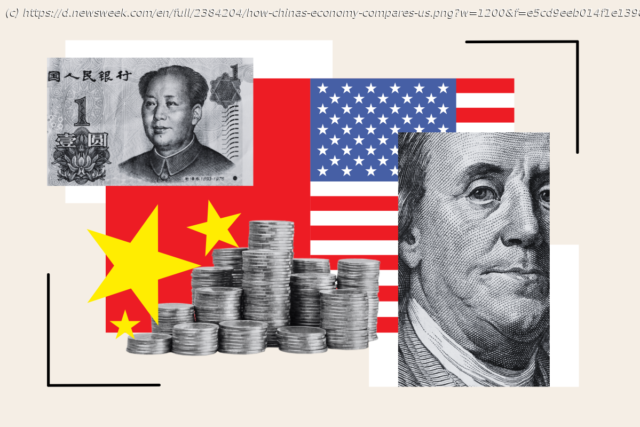The IMF forecasts that the U.S. and Chinese economies will grow by 2.7 percent and 4.6 percent, respectively, in 2024.
The American and Chinese economies bucked growth predictions in the first quarter of 2024.
U.S. expansion slowed amid rising inflationary pressure, but unemployment remained low. Meanwhile, China’s economy showed signs of recovery in several sectors, though some of this had tapered off by March.
The economic landscapes of both countries have diverged since the end of the pandemic. The U.S.’s has shown resilience, driven by consumer spending and a robust job market. China’s has been weighed down by a property-sector crisis, faltering foreign investment and tepid consumer confidence, complicating its trajectory.
The U.S. economy grew faster than expected last year on the back of a hardy job market and strong consumer spending, with a real GDP growth rate of 2.5 percent.
In the first quarter of this year, however, the economy expanded by just 1.6 percent year over year, down from 3.4 percent in October-December 2023 and less than the 2.4 percent predicted by Wall Street.
The figure marks the slowest growth rate in two years amid rising inflation and declining public and government spending.
„The economy will likely decelerate further in the following quarters as consumers are likely near the end of their spending splurge,“ Jeffrey Roach, chief economist at LPL Financial, told CNBC.
While inflation is driving down savings rates and increasing pressure on consumers, Roach expects it will let up later this year as demand slows overall.
A strong job market continues to buttress the economy. The Department of Labor reported an unemployment figure of 3.






